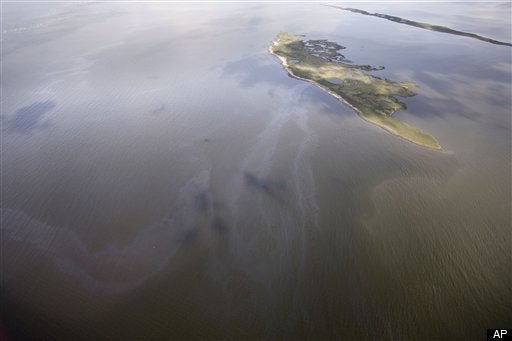
A day after the federal government increased its estimate of oil spilled in the Gulf of Mexico to more than 4 million barrels -- making the Deepwater Horizon disaster the worst offshore oil accident in history -- BP is playing dumb.
"We don't have our own estimate of the flow rate or an assessment of this report," BP spokesman John Barnes told the Huffington Post. He said BP was not a part of the federal scientific task force that came up with the estimate -- although he conceded that the oil company did provide data to the group.
"It's important to know the amount of oil released, but we're not actual participants in that," he said.
It's inconceivable that BP wouldn't have very precise measurements of exactly how much oil shot out of its blown-out well.
By contrast, it's not hard to see why BP's lawyers wouldn't want anyone to say anything one way or the other. The amount of oil spilled is inevitably going to be one of the most significant points of contention when it comes to determining BP's ultimate liability.
In addition to clean-up costs -- for which BP has already pledged $20 billion, for starters -- the federal Clean Water Act allows the government to levy a fine of at least $1,100 per barrel of oil spilled -- and up to $4,300 per barrel if the company is found to be grossly negligent.
At 4.1 million barrels spilled, that adds up to somewhere between $4.5 billion and $17.6 billion in civil penalties.
And that's real money. For comparison's sake, $17.6 billion is more than the gross domestic product of half the countries in the world.
It's even more than the $14 billion BP earned in profits in all of 2009 (though less than the $25.6 billion BP earned in 2008, when the company profited handsomely from soaring gas prices.)
BP has continually tried to low-ball and minimize the amount of oil spilled, with former CEO Tony Hayward even going so far as denying for weeks after the spill that any significant amount of oil remained below the surface. A key feature of dispersants -- indeed, possibly their biggest selling point, as far as BP was concerned -- is that they keep the oil underwater. BP applied 1.8 million gallons of dispersants to the spill.
The new federal estimate concludes that at the beginning of the spill, 62,000 barrels of oil per day were spewing out of the well, with that number decreasing to 53,000 barrels just before it was capped.
Rep. Ed Markey (D-Mass.), the chairman of the House Energy and Environment Subcommittee, called attention in a statement Monday night to what a coincidence those figures were.
During a May 4 briefing held by Markey, BP officials stated that a maximum estimated flow would be 60,000 barrels a day. So, Markey concluded, "BP's initial worst case scenario has been the reality since day one of this disaster."
And last week, Markey released documents indicating that BP assumed a flow rate of 53,000 barrels per day as early as July 6 when calculating how much dispersant to apply.
*************************
Dan Froomkin is senior Washington correspondent for the Huffington Post. You can send him an e-mail, bookmark his page; subscribe to his RSS feed, follow him on Twitter, friend him on Facebook, and/or become a fan and get e-mail alerts when he writes.
